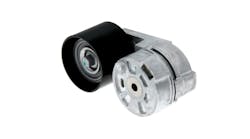The U.S. Environmental Protection Agency (EPA) has established minimum refill intervals for the diesel exhaust fluid (DEF) used in selective catalyst systems to reduce nitrogen oxides (NOx) from diesel engines.
The EPA says it has taken this action because Selective Catalytic Reduction (SCR) is now a common technology in the trans¬portation sector. This technology requires use of a diesel exhaust fluid that reacts in the system, is consumed and must be periodically refilled to sustain control of the nitrogen oxides (NOx) emissions.
Until now, the agency has been relying on a case-by-case approval of refill intervals – regulated as scheduled emission-related maintenance.
The EPA’s final rule improves the clarity and transparency of EPA’s requirements by add¬ing DEF replenishment to the required emission-related maintenance and setting minimum refill intervals.
Light duty vehicles
The EPA is setting a minimum fluid refill interval of 4,000 miles for light duty vehicles and light-duty trucks that use SCR. For example, a vehicle with a 400-mile fuel range would need to refill the DEF tank no more frequently than every tenth fuel fill-up.
For operators who change oil every 7,500 miles and fill the DEF tank at the time of the oil change, no more than one DEF refill would be needed between oil changes.
This is a shorter interval than originally proposed, says EPA, because oil change intervals are generally lengthening, there are trade-offs with the weight of over-sized DEF tanks and DEF is becoming more available to consumers.
Heavy duty engines
For all heavy duty engines, EPA is setting a fluid refill interval (in miles or hours) in relation to the vehicle’s fuel capacity. This means the DEF refill must have, at a minimum, a 1:1 ratio with the distance between fuel refills.
This is the same interval EPA proposed for engines in centrally-fueled vocational trucks, but it is shorter than the 2:1 ratio proposed for engines in long-haul trucks.
For SCR-equipped non-road diesel engines, EPA is finalizing a DEF refill interval at least as long (in engine-hours) as the vehicle’s fuel capacity, which is unchanged from the proposal.
Emergency vehicle provisions
In June 2012, EPA adopted regulatory flexibility for fire trucks and ambulances to prevent emission-related power loss on these emergency vehicles. On diesel-powered vehicles, when emission-related maintenance does not occur as designed, many engines are set to cut power to prevent abnormal conditions from causing damage or excess emissions.
However, EPA’s 2012 rule finalized a new kind of auxiliary emission control device (AECD) so engine manufacturers can have the flexibility to avoid such abnormal conditions and avoid reduced performance for fire trucks and ambulances.
In its final action, EPA expanded the application of this AECD to allow case-by-case approval for engines used in other types of emergency vehicles. The intent is to cover vehicles that are regularly used in emergency situations and where the functioning or malfunctioning of the standard emission control system may prevent the vehicle from performing as necessary when the vehicle is needed to perform work related to reducing risk to human life.
To learn more
More information on the final rule, regulations and related documents on EPA’s Office of Transportation and Air Quality website at: www.epa.gov/otaq/hd-hwy.htm.




